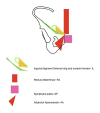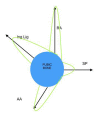Sportsmans Groin: The Inguinal Ligament and the Lloyd Technique
- PMID: 30498808
- PMCID: PMC6251070
- DOI: 10.5334/jbr-btr.1404
Sportsmans Groin: The Inguinal Ligament and the Lloyd Technique
Abstract
Groin pain is a catch all phrase used to define a common set of symptoms that affect many individuals. It is a common condition affecting sportsmen and women (1, 2) and is often referred to as the sportsman groin (SG). Multiple surgical operations have been developed to treat these symptoms yet no definitive imaging modalities exist to diagnose or predict prognosis. This article aims to discuss the anatomy of the groin, suggest a biomechanical pathophysiology and outline a logical surgical solution to treat the underlying pathology. A systematic clinical and imaging approach with inguinal ligament and pubic specific MRI assessment, can result in accurate selection for intervention. Close correlation with clinical examination and imaging in series is recommended to avoid misinterpretation of chronic changes in athletes.
Keywords: Groin pain; Inguinal Ligament; Lloyd release; MRI; Surgery.
Figures



References
-
- Lloyd, DM. Sportsman’s Groin and the Inguinal ligament release procedure. In: Diduch, DR and Brunt, LM (eds.), Sports Hernia and Athletic Pubalgia: Diagnosis and Treatment, 163 DOI: 10.1007/978-1-4899-7421-1_14 - DOI
-
- Meyers, WC, McKechnie, A, Philippon, MJ, Horner, MA, Zoga, AC and Devon, ON. Ann Surg. 2008; 248: 656–67. - PubMed
LinkOut - more resources
Full Text Sources

